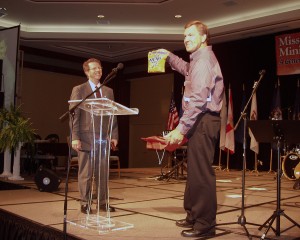By Clint Cook
I recently had a very important exchange with a young pastor who has just taken a position at an established, traditional church. Since arriving, he has discovered that the church is severely outdated in a number of ways which limit its impact on the community. This  pastor desires for his church to be an important influence within their community and wants to lead the church into the 21st century. He proceeded to ask me what is perhaps the most common question a young leader asks when beginning a pastorate at an older, established church: “Is there ever a point in a pastorate when all the needed change is simply too risky? Is there a point when you say it’s just not worth it?”
pastor desires for his church to be an important influence within their community and wants to lead the church into the 21st century. He proceeded to ask me what is perhaps the most common question a young leader asks when beginning a pastorate at an older, established church: “Is there ever a point in a pastorate when all the needed change is simply too risky? Is there a point when you say it’s just not worth it?”
My response was that he should ask and answer the following questions regarding his church:
1. How long do you anticipate staying in this church?
If a pastor doesn’t think he will stay very long in a church, this its not worth encountering resistance and (most likely) causing friction due to change and new ideas if he isn’t going to see it through. If your personal preference is to stay in a church only 2-3 years, then leave the church’s methodology alone.
2. What is your opinion of the church leaders?
You will need a lot of influencers to be able to pull off major change. When a pastor first comes to a church, he is only the nominal leader. This existing church leaders are the ones still in charge. If you want to initiate change and survive the process, you have to carefully assess the mindset of your church leaders.
3. How much change do you believe the church can withstand?
Maybe the best way to analyze this is to break down the age groups of your congregation. If you congregation is predominately a 70+ congregation, then they are less likely to handle change as easily as a 40 and under age group. Know your age groups and their percentages before implementing change.
4. Is the facility designed in a way wherein you could offer an alternative contemporary service at a different time and leave the main worship hour in its current traditional style?
Change can be made easier if you first add something new, but leave the existing service alone to maintain stability and continuity for traditional worshipers.
5. What has God put in your heart to do? Are you diligently searching His will?
There’s no other biblical book that can help a young leader approach change in a church than the Old Testament book of Nehemiah. Read it and learn.
When all of these questions are answered, a young leader is in a much better position to truly evaluate whether or not it is worth leader a church through major change.
Do you think this list is missing some elements to consider before implementing change? Do you know of other ways to help make a transition smooth when undergoing important shifts? Click on ‘Leave A Comment’ at the top of this article to share your experiences and opinions.


